Fire in their bellies: Meet Sussex's traditional bonfire societies
Guy Fawkes? He's got nothing to do with it. Jenny Gilbert meets members of the bonfire societies whose riotous conflagrations pre-date the Gunpowder Plot
Your support helps us to tell the story
From reproductive rights to climate change to Big Tech, The Independent is on the ground when the story is developing. Whether it's investigating the financials of Elon Musk's pro-Trump PAC or producing our latest documentary, 'The A Word', which shines a light on the American women fighting for reproductive rights, we know how important it is to parse out the facts from the messaging.
At such a critical moment in US history, we need reporters on the ground. Your donation allows us to keep sending journalists to speak to both sides of the story.
The Independent is trusted by Americans across the entire political spectrum. And unlike many other quality news outlets, we choose not to lock Americans out of our reporting and analysis with paywalls. We believe quality journalism should be available to everyone, paid for by those who can afford it.
Your support makes all the difference.It takes a special type of person to brave the autumn drizzle and go out faggoting early on a Sunday morning. But that's what a few hardcore members of the Robertsbridge Bonfire Society have turned up to do, equipped with saws and hefty billhooks, as well as some hefty hangovers induced by Sussex ale on the previous night's outing to Hastings, some 10 miles south.
The cutting of faggots, or "bats", in this case from a local hazel copse that needs thinning, is required for the making of torches… medieval-style torches made from trimmed branches nailed and wound with hessian and later doused in pitch. The Robertsbridge Bonfire Society must produce roughly 1,000 of these primitive fire-sticks in time for its own bonfire parade in three weeks' time – and the pressure is on.
A thousand or more similar items have been incinerated in one or other Sussex village or town every Saturday night since early September. And thousands more will be ignited and marched with on Saturday nights up to and including the first week of December. In each town or village, the local society, dressed in its distinctive costume (typically smugglers, convicts, or pearly kings and queens), marches at the head of its home parade, followed by visiting societies, whose combined mass usually totals several hundred.
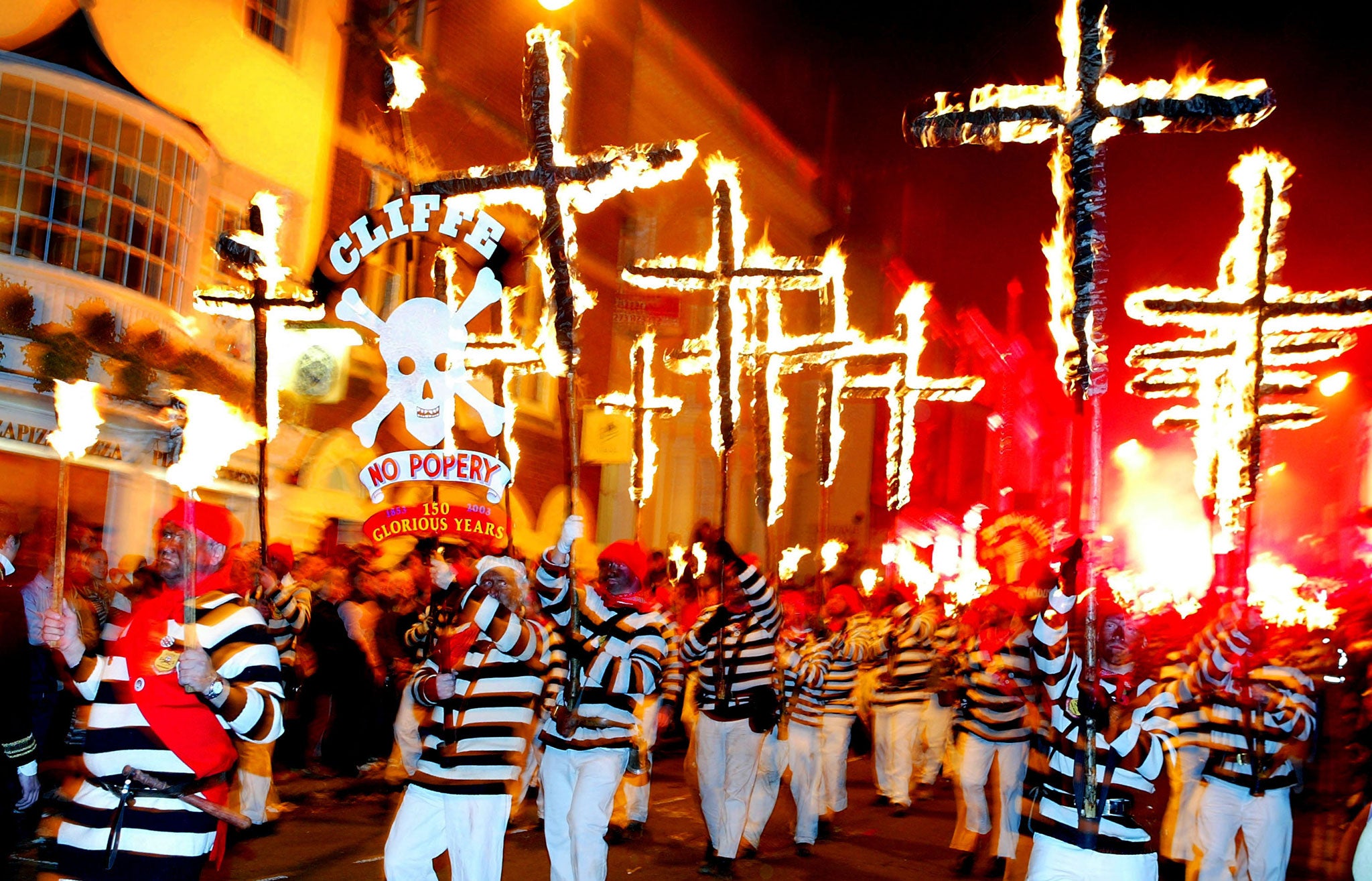
Over the following weeks, each society will march at its neighbours' events. For the Sussex bonfire tradition isn't confined to the fifth of this month. Nor is it confined to the famously flamboyant event in the county town of Lewes, a riotous fiesta where burning tar barrels are rolled down the steep cobbled streets, shopkeepers board their windows, the local police obligingly keep a low profile, and young families and those of a nervous disposition are advised to stay away.
No, in this rural pocket of south-east England, bonfire is not one night but a season that's growing longer by the year. Since the 1970s, when the tradition looked in danger of fizzling out, it's seen a remarkable recovery. This year, 35 bonfire society events will take place – only two of them on 5 November – making it possible for every Sussex society, and a smattering in Surrey and Kent, to march in its colleagues' events and visit their local hostelries. For, as one Robertsbridgian admits, on one level bonfire is a pub crawl with added pyromania. But it's also the proud continuation of a tradition that almost certainly pre-dates the failed Gunpowder Plot of 1605.
John Goldsmith, former vice-chair of the Battle Bonfire Society (aka the "Battel Bonfire Boyes", in keeping with its official position as the oldest of all the Sussex societies), is sceptical of the Catholic conspirators' place in the greater scheme of things. "Can that really be Guy Fawkes we're putting on the bonfire," he asks, "when Guy Fawkes wasn't burnt but hung, drawn and quartered?"
More likely, he thinks, the bonfire, the flaming torches, the parading in the streets and the burning of an effigy derive from the older end-of-year tradition of beating of parish bounds with flaming torches, as a symbolic banishing of evil in the darker months. Historians have suggested even older roots in samhain, a pre-Christian winter festival.
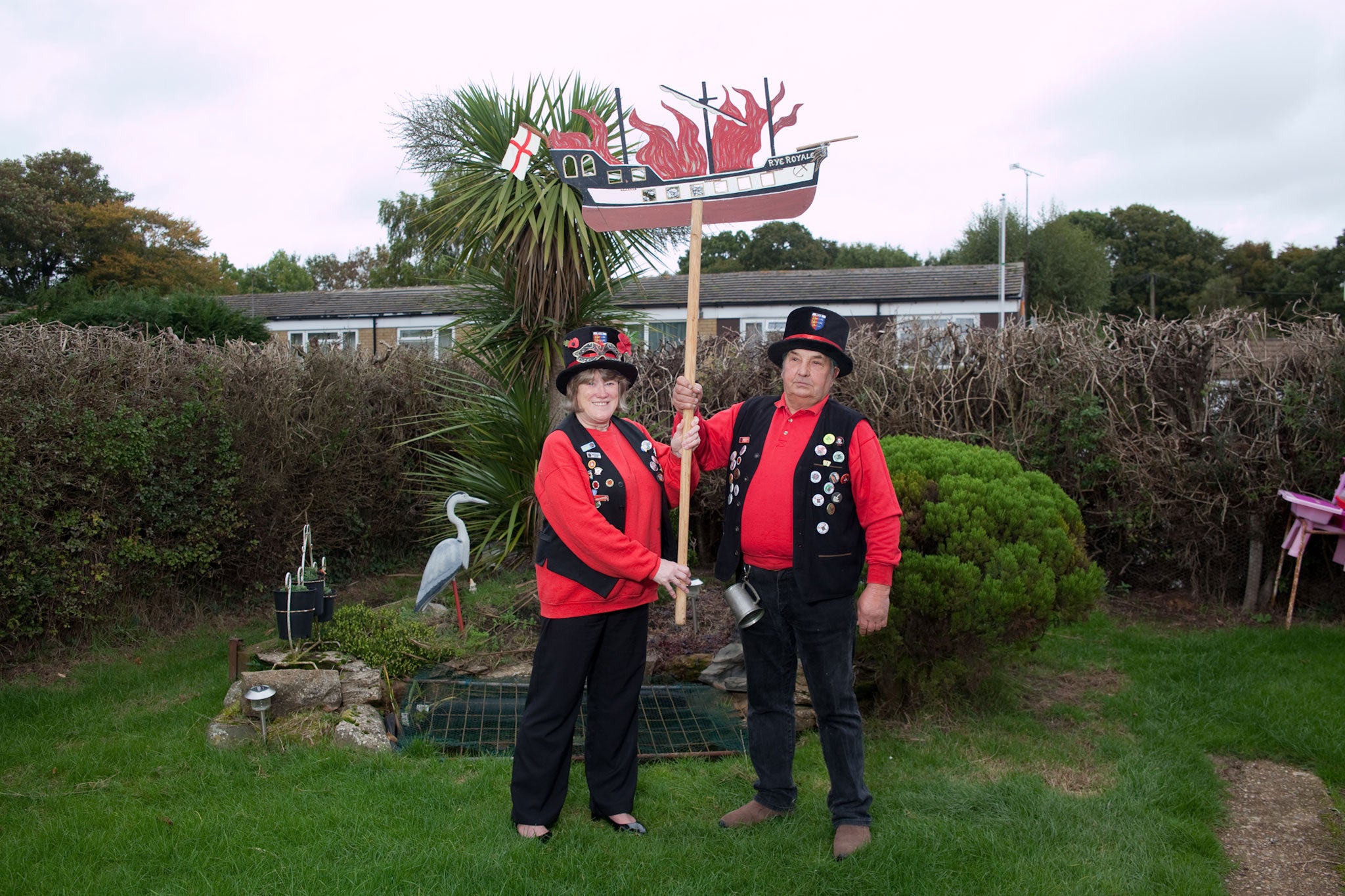
The annual Battle Bonfire, which this year triumphantly returned to its original site in front of Battle Abbey, marked its official 300th anniversary in 1986 with a gathering of all 25 of the then-current societies – there are almost double that number now. O
nce a national centre of gunpowder production, Battle is home to the only society with documentary evidence of its existence in the 17th century, and it claims an unbroken annual tradition since 1685 – mention of which raises a sceptical eyebrow among some bonfire buffs. A by-law passed in 1906 forbidding the building and lighting of a fire within 25 yards of a highway hit some societies so hard that they disbanded. "Battle don't like to admit it but that ban stopped even them for two or three years," says Goldsmith, lowering his voice.
The vehemently anti-papist stance of the seven societies that operate in Lewes is not noticeably shared elsewhere. In fact, when Robertsbridge revived its society after an 80-year break (following the 1906 ban), it chose as its principal uniform a Cistercian monk's habit, because the medieval village was once famous for its monastery.
The first night they marched in their habits they were booed, particularly by Lewes, but the booing was good-natured enough. In Lewes, the persistent anti-Catholic sentiment derives from a horrific incident in the town's history, when 17 Lewes protestants were burned at the stake under the reign of Mary Tudor. But as Goldsmith says: "Ask most people in Sussex what bonfire is about and they don't have a clue. Outside Lewes, the old political and religious connotations have faded."

Though it goes back several hundred years, the dressing-up seems to have sprung more from a need for disguise than a desire for group identity. In the early days of the processions, revellers would black their faces so as not to be recognised by neighbours or employers. As well as being a night of mischief, it was a night for settling old scores. Farm property was stolen, houses damaged; in Rye, it was not uncommon for the boat of an unpopular fisherman to be dragged out of the boatyard and burnt.
On a less sinister level, you'll hear countless stories of fireworks inserted into prize marrows, and of bangers secreted in pub inglenooks, displacing a ton of soot from the chimney into the room. The town of Battle was famous for a terrifying home-made firework called the Battle Rouser, whose chief combustive ingredient was available to buy by the pound from the local ironmonger until well into the 1950s.
Public-order disturbance, or its near neighbour, high spirits, has long been integral to bonfire. The society known as Section 5 was born when a group of drummers from the Hastings society set off from a pub in Battle High Street to board their coach home. They drummed as they walked, a policeman told them to stop, they ignored him, and received an official caution under Section 5 of the public order act.
Now a society in its own right, Section 5 started meeting weekly to practise drumming year-round. "The instruments are bits of drumkit, racktoms, snare drums and a solid core of bass drums," says their leader Alan Dyas. "We've 90-odd members so we make quite a racket."
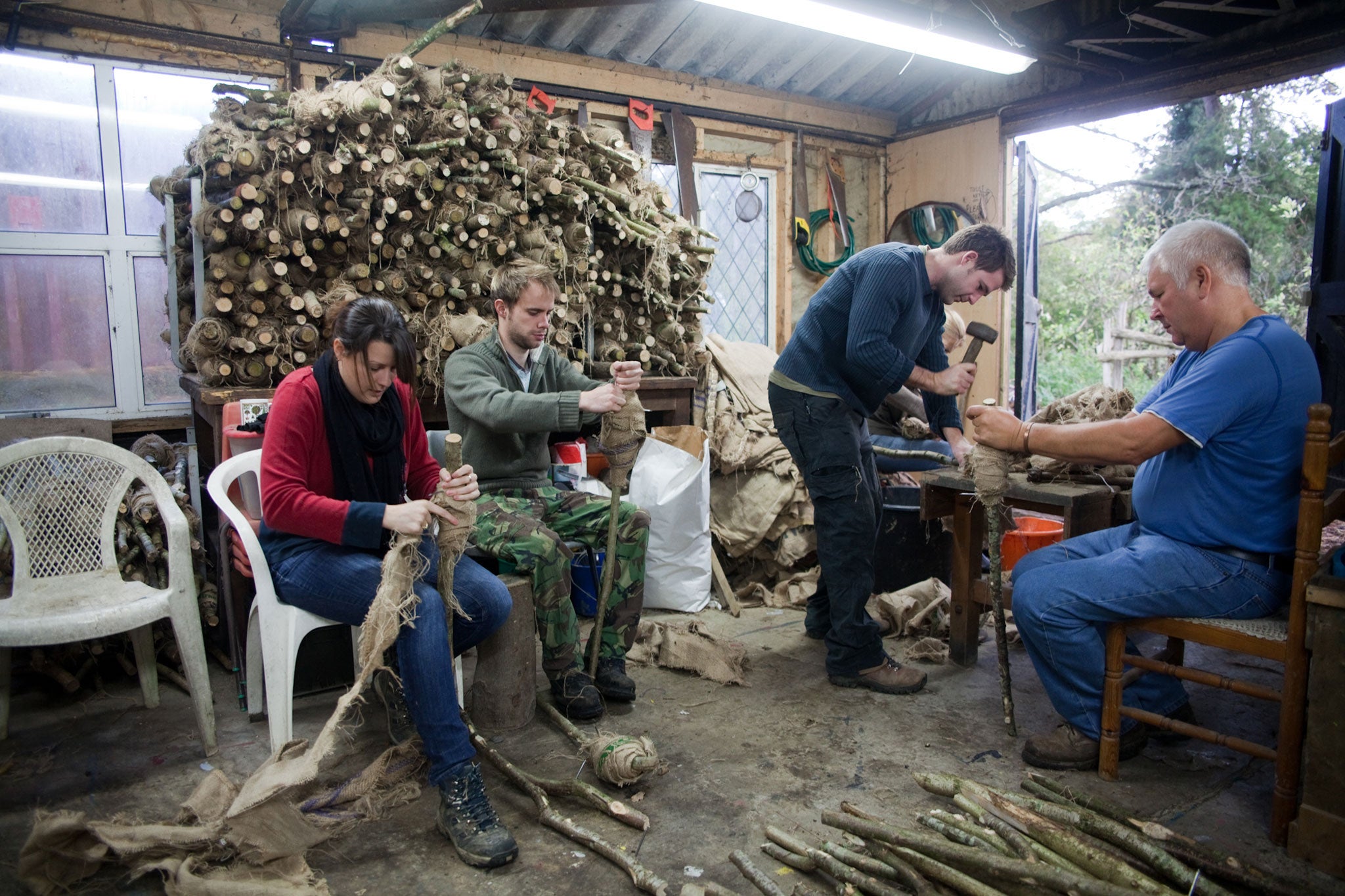
As Dyas explains, the drumming began as a response to the ban on "drop-down" bangers in processions, once randomly tossed by the handful on to crowded streets. The events had grown quiet, and loud, rhythmic drumming filled the void, its primal urgency enhanced by the presence of naked flame.
Section 5, in their black-and-red face paint and top hats and tails, are now a popular feature in processions. They have also helped train other bonfire drumming groups, including one in the village of Northiam, fielding a society for the first time this year.
Sandra and Francis Warren joined the Rye and District Bonfire Society as a couple 20 years ago and most Saturday nights "in the season" they don their hats and commemorative badges, testament to hundreds of nights spent tramping dark streets under the Rye banner.
Francis, whose grandparents were active members in the 1930s, doesn't look like anyone's idea of a tearaway – but then he starts to reminisce, chuckling over his schoolboy memory of poking bangers into cracks in the mooring posts in Rye Harbour (with the result that boats drifted away).
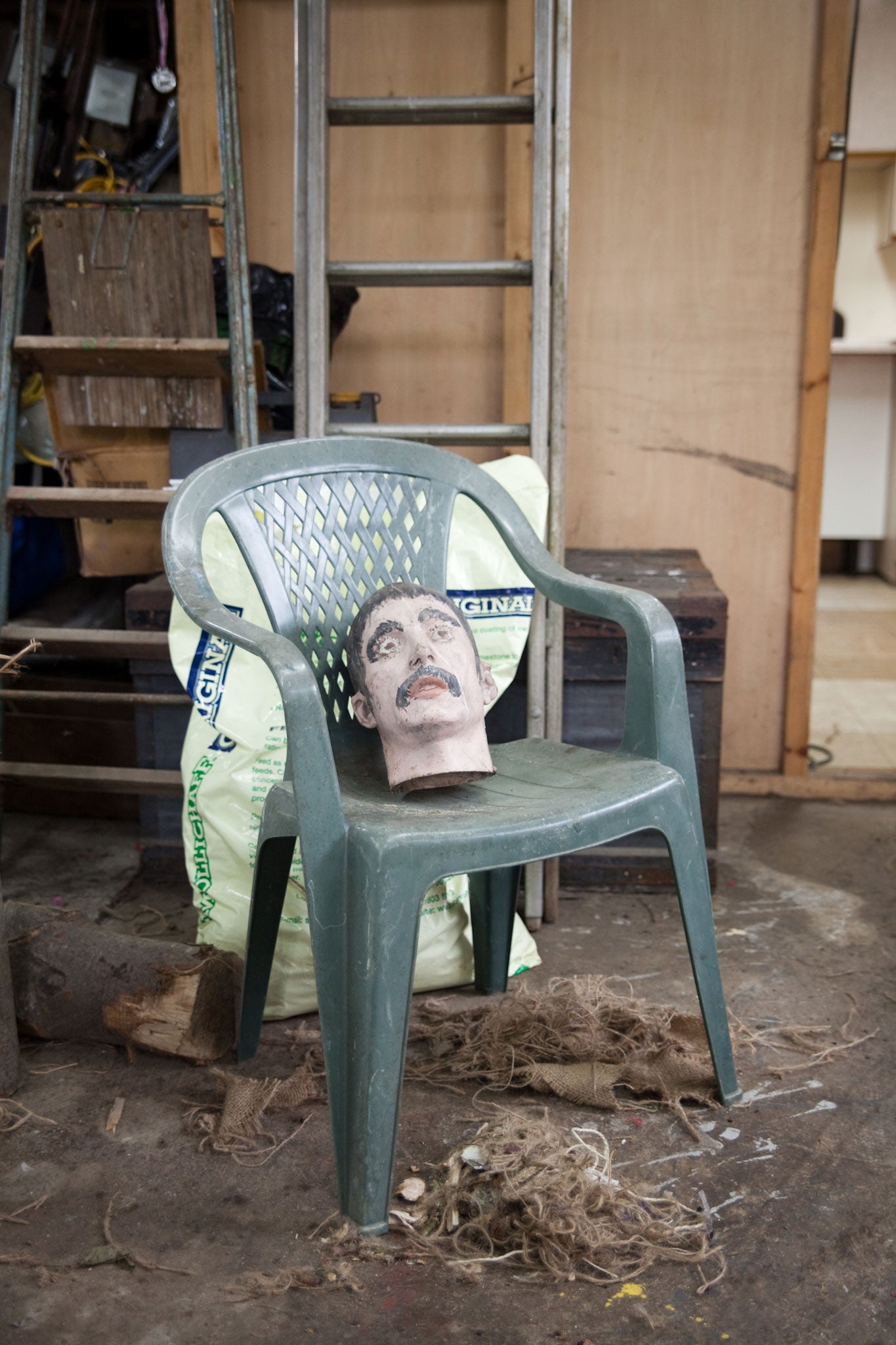
Now, as chairman of the society, he finds himself assailed by niggling health and safety issues. The burning boat that traditionally brings up the rear of the Rye parade is required to have its own gas fitter and yearly gas certificate. "The world's gone mad," he complains. "It's luck that we happened to have a gas fitter as a member."
Safety, however, is a prime concern for Jo and Rob Rainsbury, who march for Robertsbridge with their children Thomas (aged eight), Willow (six) and four-year-old Phoebe – the entire family in Cistercian habits. "We only go to the smaller events that don't allow drop-downs," says Jo, "and the children only ever carry torches topped with battery lights. The real ones are just too dangerous."
Her husband points to scorch marks and holes his monk's habit sustained the previous night. "In the past we've been wary of processions that use banger carts, too," he says. "They'll drag a big oil drum along on wheels and drop a rookie [banger] into it. With the explosion contained, it gives a good, deep boom. But the kids are just beginning to enjoy that."
For local chef Andrew Augarde, known as Ogi, and his brother Tom, the more outlandishly macho elements of bonfire are the attraction. Embodying the spirit of the Robertsbridge as Roman centurions, they make the riveted steel breast-plates of their armour at the village forge, and insist that anyone wanting to join them does the same. Their battalion is now 20-strong, complete with helmets, shields, blunted replica swords and "bearskins" fashioned from old synthetic fur coats.
Not only has their all-conquering maleness been greeted with enthusiasm at events, but last summer it earnt them pocket money for an appearance at a Goldman Sachs banker's birthday party. The Sussex bonfires are without exception free to the public and all the contents of the collection tins goes to local charities.
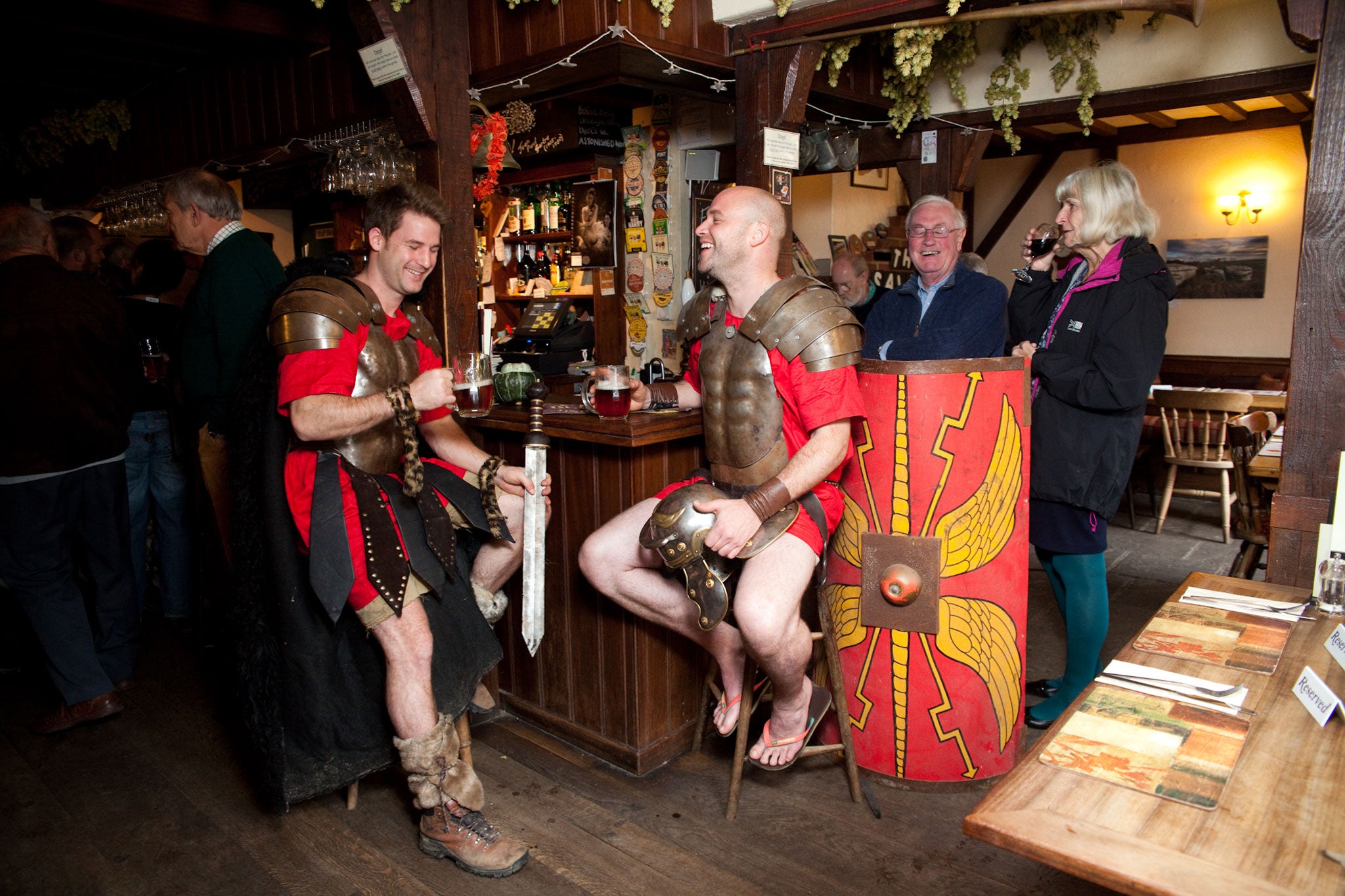
The one element of bonfire that no one wants to talk about is the making of the effigy – the fancy edifice each society unveils at its home event, then razes to the ground. Its theme is usually topical, touching on local or national politics. Or it might celebrate the life of someone who was popular. "Just because we blow it up doesn't mean we're anti," explains John Goldsmith.
Battle, renowned for its ambitious effigies, was so secretive about this year's that it refuses to say anything despite knowing it will be ash by the time these words appear. Robertsbridge, to be fair, declines a photograph only because they haven't yet started to build theirs.
Past themes have ranged from Osama bin Laden to the ban on smoking in pubs. It's generally agreed that the most effective in recent memory was the Floods – a nod to the 1999 catastrophe that forced scores of local families to evacuate their homes. Impressively, the effigy incorporated a real inflatable lifeboat of the type that had been rescuing villagers via their first-floor windows.
The faggots are all neatly stacked back at Robertsbridge HQ, a converted chicken hut by the A21. Still nursing hangovers, but cheered by cups of tea and bacon baps, the society stalwarts have a production line going. One slashes strips of hessian from old sacks, another hammers nails, many hands are put to bandaging the bats in the sacking strips while some merely supply a stream of banter.
"You spend most of the year raising the money," says one in a tone of mock complaint. "You spend eight weeks doing the physical preparation, then you're into the season, the whole lot goes up in smoke, and it starts all over again."
The Robertsbridge Bonfire is on 16 November. For more Sussex dates, see bit.ly/16xPLUB
Join our commenting forum
Join thought-provoking conversations, follow other Independent readers and see their replies
Comments